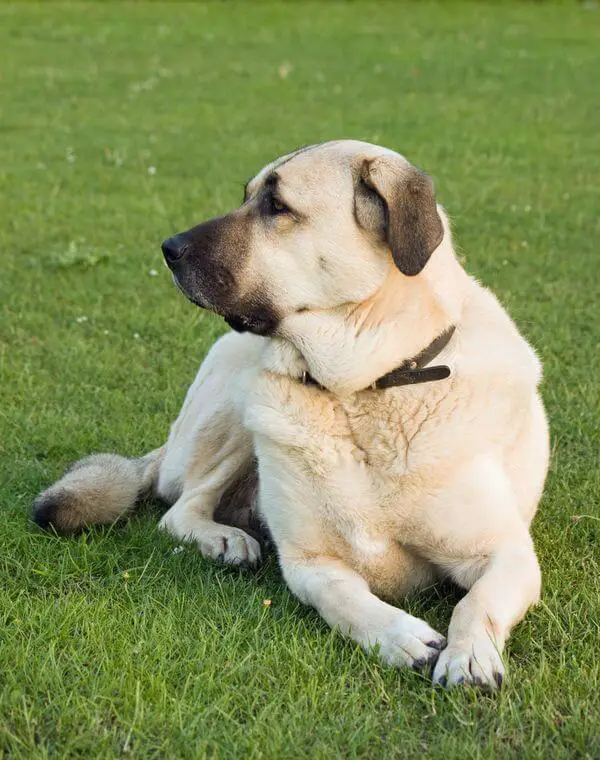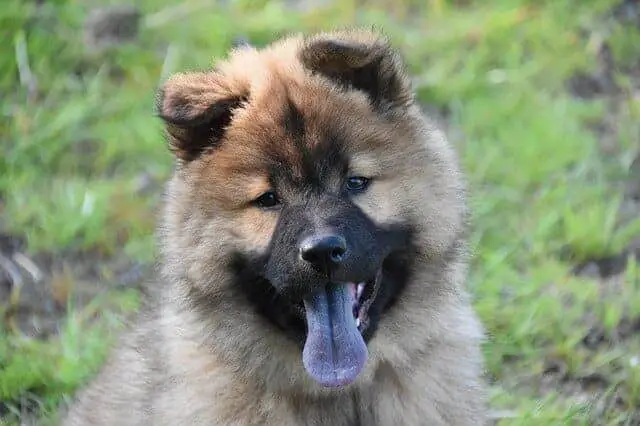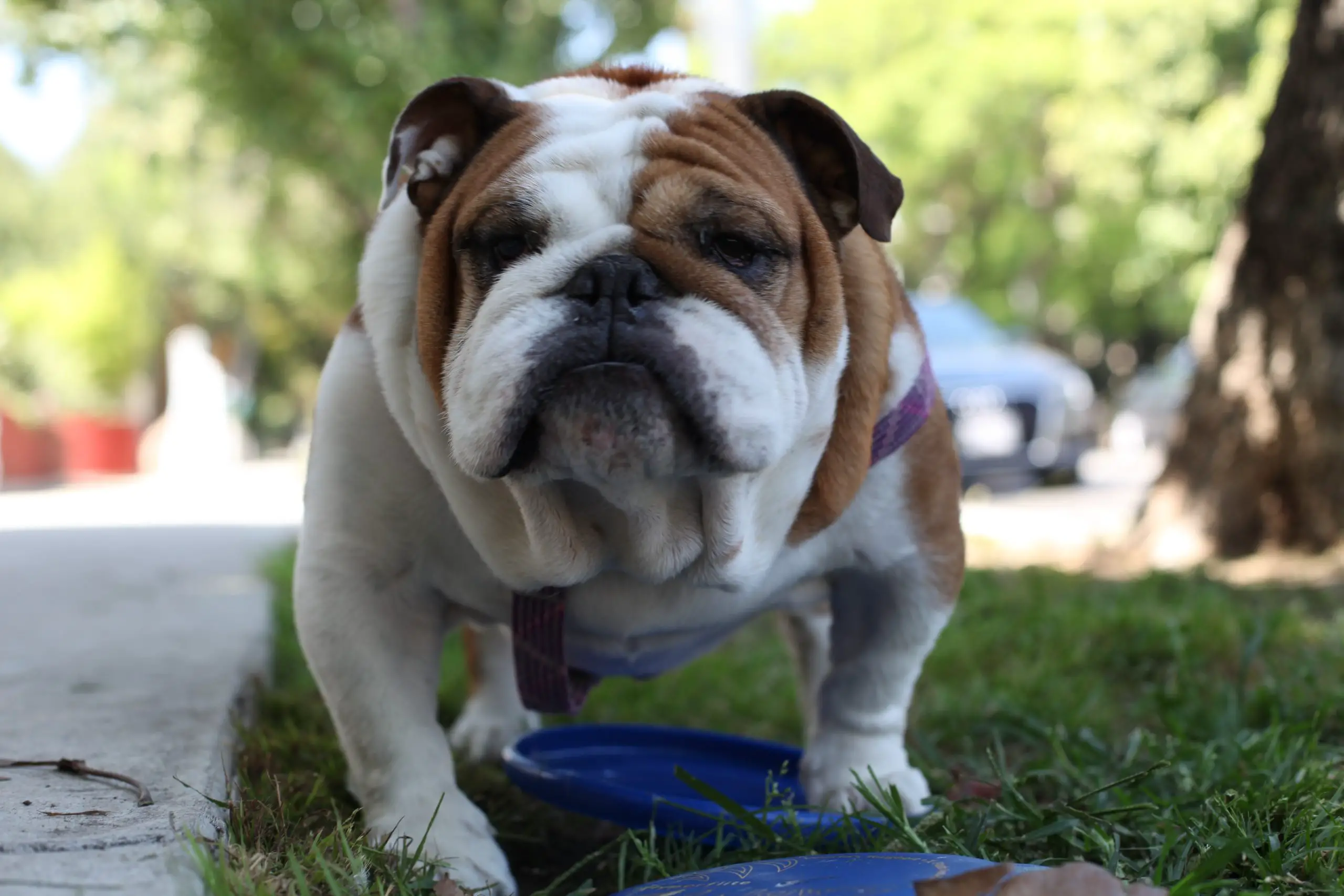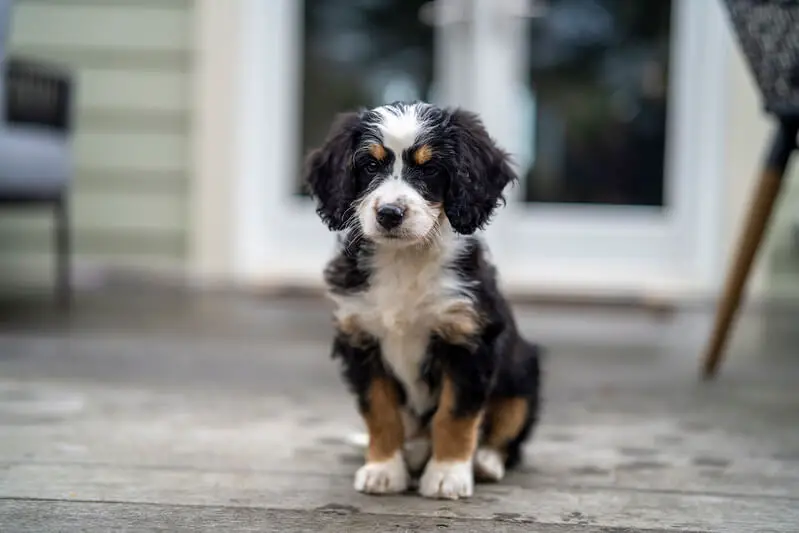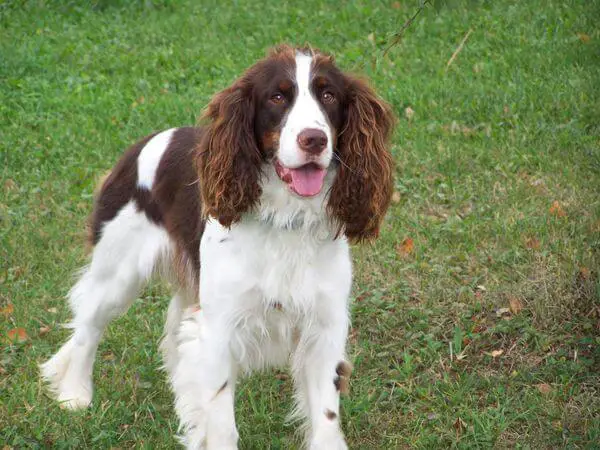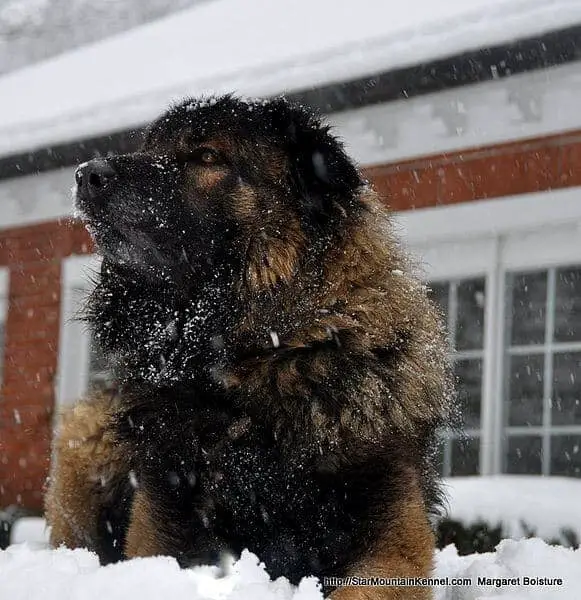Anatolian Shepherd
Anatolian Shepherds are a whole lot of dog. They are known not only for their sheer size, but for their good looks and fierce loyalty. Originally bred to guard livestock in the Anatolian region of Turkey, they have now been imported to work as livestock guardian dogs in many regions of the planet.
The exact genetic origins of the Anatolian Shepherd are not known; however, they are likely a mix of mastiff and sight hound, which allowed for strength and courage, as well as speed and agility. Their muscular, long legged frame is tough and rugged and they have an excellent sense of sight and hearing.
The Anatolian Shepherd comes in either brindle or fawn colouring, with a black mask and ears. Their long tail is unaltered and carried low, with a slight curl at the end; they have unaltered drop ears which sometimes have feathering at the edges. Their dense double coat, with thick undercoat, provides for both hot and cold extremes in weather and the ability to do their job in harsh landscapes.
Anatolians are a great family dog but only for an experienced owner that has the ability to be a strong and compassionate leader. This natural self-confident and independent breed needs space to wander and prefers spending much of their time outdoors.
Anatolian Shepherd Key Information
Height: 28 – 32 inches
Weight: Females 80 – 120 pounds, males 110 – 150 pounds
Life span: 11 – 13 years
Breed family: Pastoral (UK); Working Group (AKC)
Exercise requirements: Medium
Good with children: Mostly
Area of origin: Central Anatolia, Turkey
Also Known As:Karabash, Anatolian Karabash, Turkish Shepherd Dog, Kangal, Goban Kopegi
History
Artefacts of canines with similar physical characteristics to the modern-day Anatolian Shepherd have been found dating back to 2000 BC in the Anatolian region of what is today Turkey. Dating back to about 1800 BC, the Book of Job, found in the Old Testament of the Bible, makes references describing a similar dog protecting Job’s vast flocks from invading predators.
The Anatolian Shepherd was bred to endure severe weather conditions from very hot, dry summers to very frigid winters. They were bred to be pastoral working dogs, and guard the sheep and goats of the sedentary, nomadic herders. In fact, the physical characteristics of the breed, the size and the colouring, were bred so that they would resemble the livestock in which they lived to protect. As they blended into the flock, this canine was able to disguise itself and be a better protector. Moreover, their agility, speed and stamina enabled the dogs to guard the livestock over long distances and their independent nature enabled them to scavenge for their own food, without being a threat to the flock.
In modern times, the Anatolian Shepherd has been successfully used in America to guard livestock in areas where the predators are protected species. Likewise, in Namibia, the Anatolian is being used for cheetah conservation by protecting herds from cheetah attack. Previously, farmers would resort to shooting, poisoning or trapping animals that posed a threat to their livelihoods. A livestock guardian dog, by nature, is a canine that does not have a strong prey instinct as they will be a deterrent to intruders but are not prone to kill.
Personality
Interaction with Children
Large dog breeds can pose a threat to young children simply by their sheer size, and the Anatolian Shepherd is no different. The imposing bulk of this breed can easily produce unintentional knocks and tumbles regardless of their calm and protective nature. All dog breeds should be watched closely when interacting with young children, but this is especially true with this breed as they will not respect a child as a pack leader and disregard their commands.
An Anatolian Shepherd will guard anyone they consider to the be their flock, including the younger members of the family. They can be overly protective with visiting childhood friends and can easily misinterpret rowdy behaviour and play fighting for a genuine threat.
Interaction with other pets
Anatolian Shepherd can be dog aggressive to animals outside of their pack. They are protectors and this protective instinct will go beyond their literal or imagined flock to protecting their owner, their family and other pets within the household. They require early and consistent socialization to avoid any excessive guarding behaviour and will be best in a household where either they are the only dog, or they can be guaranteed to be the dominant canine.
Feeding
Anatolian Shepherds were traditionally used to finding their own food, while simultaneously protecting their flock. Though they have scavenger tendencies, this breed is not prone to overeating. As such, it is possible to free feed this breed, where their food is left out all of the time rather than feeding at particular intervals. Alternatively, a large meal once per day should suffice for an adult dog.
This breed is very big, and will therefore need to consume a lot of daily calories. A high-quality dog food, specifically formulated for a large, active breed, will be best for your Anatolian. Their diet should be kept consistent and treats should be reserved to a minimum and ideally used for training purposes.
Food Allergies
Diagnosing and treating a food allergy, or sensitivity, in your Anatolian Shepherd can be difficult to isolate. If you notice itching, foot or ear infections, diarrhea, or vomiting, then it is best to get in touch with your local veterinarian. They will be able to provide a guide for eliminating common allergens in your dog’s diet. Many allergens and sensitives are environmental, rather than food-related, and your vet should be able to assist with this as well.
Care
Grooming
The Anatolian Shepherd is quite low maintenance when it comes to grooming needs. This is unsurprising when considering their lineage required them to stay outdoors for long periods of time and go through their daily routine with near total independence from their owner. Today, your Anatolian Shepherd is more likely to spend time within your home, therefore, it is best if their dense coat is kept brushed every other day throughout the year. Purchasing a metal canine comb can also be useful for getting out debris and matted fur patches.
Though they are an easy dog to groom, the Anatolian Shepherd does shed, and we mean shed a lot. This is a large breed, with a lot of surface area which will shed their undercoat twice a year and during this time, your vacuum will be working overtime and earning its keep. In addition to managing the shedding of an Anatolian, it is best to do a weekly check of their ears for common infections which may manifest in a foul smell. Take this time to also give their teeth a good brushing, though this breed is generally known for good oral health.
Nails
Most dog breeds should have their nails trimmed every two to three weeks, or at least monthly, and the Anatolian Shepherd is no different. Activity levels and the environment that they exercise in does have a determining factor on how often nail trimming may need to happen. In general, most dog breeds dislike having their sensitive paws touched. Rather than avoiding necessary nail trims though, it is best to keep it part of your grooming routine to desensitize them to the procedure.
As a general rule if you can hear your dogs nails on the floor then they will likely need a trim. If in doubt about how to trim your dog’s nails your local vet will be able to show you how to do it.
Exercise
The Anatolian Shepherd requires a moderate amount of exercise, ideally in a large, fenced yard. This dog will be happiest with time exploring their own homestead or farm but will require a fence as are known to be extremely good jumpers and diggers. If you intend to take this breed for a walk, ensure that it is always keep on a leash; their protective nature and sheer size are not good for off lead parks. Even though Anatolians will strongly bond with their owners, they are independent loners. Do not expect that this breed will play fetch or other interactive games, so you will need to exercise them in other ways.
Training
Anatolians are Instinctively protective and wary of other dogs and people. This breed is best for an experienced owner that is capable of being firm and consistent with their canine training. Anatolian Shepherds can be stubborn; they were bred to make judgements on their own, not to follow commands from their ‘shepherd’ so training can be a real challenge. They are not naturally eager to please their owners, so you will need to find another incentive to encourage training such as small treats.
It is important to socialize your Anatolian Shepherd consistently and from a young age. They must learn what is ordinary behaviour to expect from other animals and people, and conversely, what is a threat. They are constantly on duty, and are prone to bark throughout the night at the slightest risk of danger.
Anatolians should not be given protection or guard dog training.
Housing
In order to accommodate a dog of the stature and temperament of an Anatolian Shepherd, it is imperative to first consider if your home is appropriate for this breed. A large yard, with plenty of room to roam is certainly a requirement. A secure fence of at least six feet in height should also be installed. This breed is very territorial and may not take kindly to visitors which have not been properly introduced so it is a good idea to make their presence known by way of signage or the like. If you have other pets in the home, remember that the Anatolian will innately desire to be the pack leader, regardless of size or age, so it is best to ensure that other animals would be amenable to this new social structure.
Apartments
An Anatolian Shepherd is a lot of dog. They also require a moderate amount of exercise and are not easily socialized with other humans and pets. Considering these inherent traits, they do not do well as apartment dogs and likely will become stressed and anxious if they do not have a personal territory in which to roam.
Dog Houses / Kennels
Anatolian Shepherds have been bred for millennium to be working dogs that roamed large farms in harsh weather conditions. As such, your dog will be fine living outside in a kennel or dog house, provided that they have adequate shelter, ventilation, and a comfortable place to sleep. To ensure your dog has a comfortable place to sleep you can have a look at our recommendations for beds for mastiffs. Heating should not be necessary unless in extremely cold conditions. This breed is meant to wander their territory freely and will not take to being tied up.
Leaving them alone
In general, Anatolian Shepherds are loners. They enjoy their own company and take time to feel comfortable in new environments and with new people or pets. They are fine with being left alone, as long as they can wander their property safely and without restriction. This breed does tend to bark, particularly at night, which may be worsened if left alone and untrained for long periods of time.
Health
Anatolian Shepherds are a generally healthy breed but, like many large breeds, do have health concerns attributed to their size. Though not common, owners should look out for hip dysplasia, elbow dysphasia, and bloat. Anatolians are known for entropion, in which the eyelid inverts but this can be surgically correctly. In addition, Anatolians are more sensitive to anaesthesia than other breeds and this should be discussed with your vet. The slower metabolism of this breed can also make them prone to hypothyroidism but this condition can be easily diagnosed and treated with proper veterinary care.
Purchasing your pet from a reputable breeder is integral to buying a healthy dog. Professional breeders will breed for temperament, physical attributes and good health. They should be able to show you the parents of your puppy and provide at least a limited genetic guarantee.
Older age
Like many dog breeds, Anatolian Shepherds tend to become more sedentary in their old age and their diet and exercise routines should be adjusted accordingly. Arthritis is common in many dogs as they age and will likely affect the joints in the spine and legs, though medication can help. It is best to speak to your local veterinarian if you have any questions about your dog’s health throughout their lifetime.
Allergies
Dog owners or their family members that are allergies sufferers will not bode well with an Anatolian Shepherd due to their extreme seasonal shedding. Though they are able to be more of an outside dog, their shedding will likely rule them out for consideration in this instance.
Anatolians often have atopy, which is an allergic reaction generally affects the feet, belly area, ears and folded skin of your canine and causes their skin to itch. Within the first year of life, the symptoms tend to emerge with behaviours such as rubbing of the face or paw licking or ear infections and tend to get worse as your pet ages. Speak to your local veterinarian as many treatments are available for this condition.
Wrapping up
The Anatolian Shepherd is an impressive dog, with a rugged stature and loyal personality. They are a whole lot of dog to contend with, and best only considered for experienced dog owners that have the ability to train their stubborn tendencies and the yard to accommodate their bulk. This dog is a true guardian and will protect your home and your family throughout their lifetime.
We have tried to ensure that the information on this page is as accurate as possible. If you see any mistakes please let us know through our Contact Us page.


